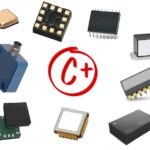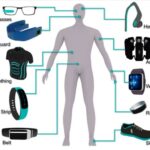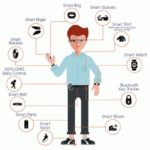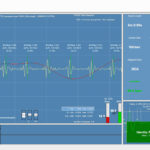With the U.S. Food and Drug Administration (FDA) rule enabling access to over-the-counter (OTC) hearing aids going into effect on Oct. 17, 2022, many people will want to know the answer to this FAQ [1]. The ruling allows individuals to buy a hearing aid without a medical exam, prescription or professional fitting. Intended to help adults with mild to moderate hearing loss, OTC devices will be highly competitive and much cheaper than traditional hearing aids. About 28.8 million U.S. adults could benefit from using hearing aids [2]. According to the Hearing Loss Association of America (HLAA), 2.7 million veterans have service-connected hearing disabilities or are in treatment for hearing-related issues but even 1 in 5 Teens experience some degree of hearing loss [3].
Today’s hearing aid sensing technology traces its roots to the integrated electret condenser microphone (ECM) discovery in the early 1960s with the subminiature backplate‐electret condenser microphone version being developed in the early 1970s specifically for hearing aids [4,5]. The ECM consists of a capacitor with a permanently polarized foil diaphragm of polyester with a thin layer of gold on its upper face and a backplate. Sound waves deflect the diaphragm to produce a varying audio frequency voltage.
Microelectromechanical systems (MEMS) officially became available to hearing aid users in 2002 [4]. With its high sensitivity, low noise level, low current consumption and low operation voltage, MEMS sensing is providing the foundation for today’s greatly improved hearing aids. Unlike other microphones that show a constant sensitivity, the frequency spectrum of sensitivity in ECMs for hearing aids shows a peak in 2 kHz ~ 8 kHz [6].
However, the sensor is the established part of the system with innovation in other portions providing differentiating factors. The first user hearing aid decisions involve mechanical design and sensor location. These include behind the ear (BTE), in the ear (ITE) and invisible (in the ear canal) (ITE) locations with other variations available as well. A cochlear implant is another option for those with extensive hearing loss where traditional hearing aids provide minimal improvement.
Electrical/electronic differentiators are also the focus of many companies and new products. These include Bluetooth connectivity and rechargeability, greatly improved speech clarity and comprehensive smartphone apps [7].
Recent improvements in hearing aid technology make these devices more convenient and simpler to use for everyone with hearing loss. For example, many modern hearing aids will adjust to different settings automatically and seamlessly depending on the environment and types of sounds that surround the user [8]. Additional optional features of hearing aids include [9]:
- Noise reduction to different levels from minimal to a high degree
- Directional microphones for improved sensing of sounds coming from in front of the user with some reduction of sounds coming from behind or beside the user.
- Rechargeable batteries rather than replacing small traditional hearing aid batteries
- Wireless connectivity using Bluetooth
- Remote controls often from a smartphone to adjust features without touching the hearing aid
- Direct audio input through wired connectivity to a television, a computer or a music device
- Variable programming to access preprogrammed settings for different listening needs and environments
- Synchronization for those with two hearing aids
Other advanced features include echo adjustments and spatial configurators to deliver the highest level of speech clarity in the most challenging environments [7]. Using artificial intelligence (AI) and advanced software, hearing aid manufacturers can be expected to provide custom hearing experience for each user.
However, a hearing aid may not be required for some hearing-impaired users. One manufacturer offers a wristband to improve user’s hearing without the need to wear a hearing aid [10]. The wristband vibrates to indicate different high frequency sounds. With the user’s brain combining sound from the ears and signals from the wristband, eventually the combination becomes like eyeglasses for sound.
References
[1] https://www.ncoa.org/adviser/hearing-aids/over-the-counter-hearing-aids/ [2] https://www.nidcd.nih.gov/health/statistics/quick-statistics-hearing [3] Homepage – Hearing Loss Association of America [4] https://www.sciencedirect.com/science/article/pii/S0924424722005222 [5] Electret condenser microphones in hearing aids.: The Journal of the Acoustical Society of America: Vol 127, No 3 (scitation.org) [6] Electret condenser microphones for hearing aids | IEEE Conference Publication | IEEE Xplore [7] Latest Hearing Aid Technology [8] What Is The Latest Hearing Aid Technology on The Market? [9] Hearing aids: How to choose the right one – Mayo Clinic [10] Hearing Aid Alternative | Clarify Wristband | NeosensoryHearing Health Guide for Parents and Kids






